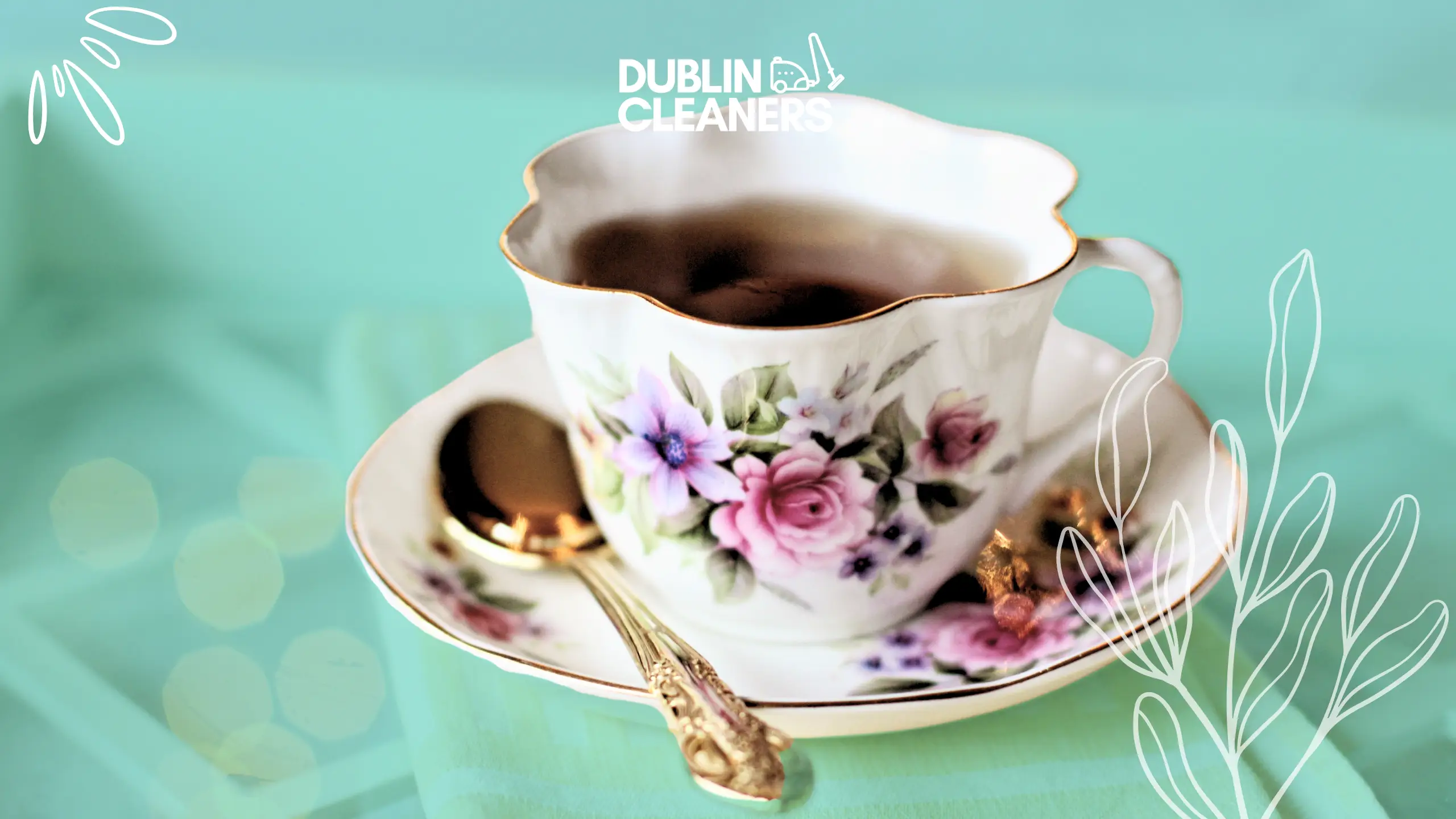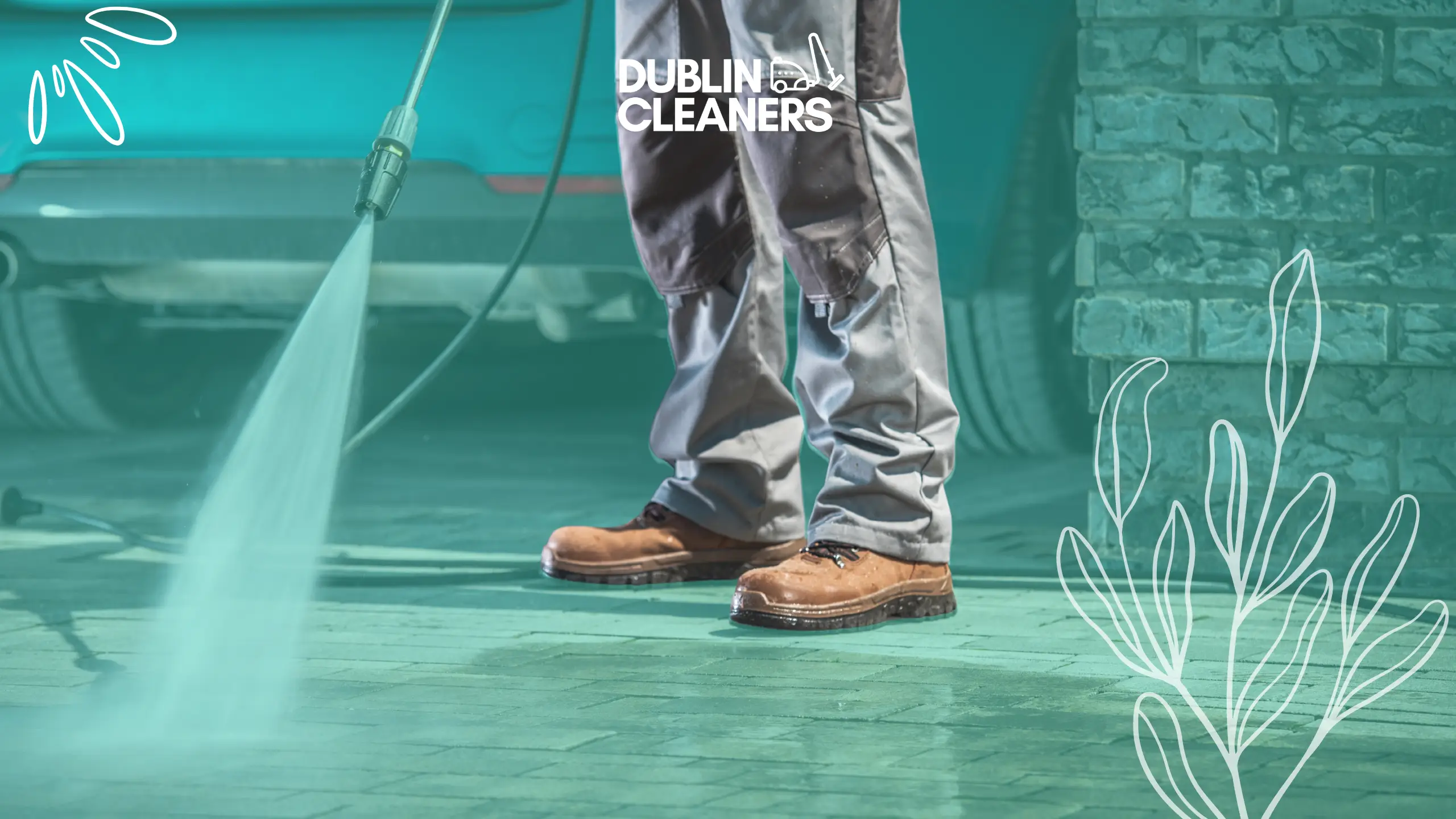Tea stains on cups are a common nuisance, but fret not! To clean them effectively, simply mix equal parts of white vinegar and water in the cup, let it sit for 10-15 minutes, then scrub with a sponge or brush. Alternatively, sprinkle baking soda into the cup, add a little water to form a paste, and scrub away the stains. For stubborn stains, try soaking the cup in a solution of bicarbonate of soda and warm water overnight. Let’s dive into the details:
Key Takeaways
- Act promptly: Address tea stains as soon as possible to prevent them from setting in and becoming harder to remove.
- Lemon and vinegar: Utilise the natural cleaning power of lemon and vinegar to break down and lift stubborn tea stains effectively.
- Soaking technique: Employ the soaking method using a solution of water and cleaning agents like bicarbonate of soda or vinegar to loosen tea stains before scrubbing.
- Regular maintenance: Incorporate regular cleaning routines using simple ingredients like baking soda to prevent tea stains from accumulating over time.
- Dishwasher advantage: Maximise the efficiency of your dishwasher by adding vinegar to the cleaning cycle to tackle tea stains on cups effectively.
- Gentle scrubbing: Use a baking soda scrub to gently but effectively remove tea stains without damaging the cup’s surface.
Understanding Stains
Tea vs Coffee
Tea and coffee stains differ in composition, with tea stains being more tannin-based and coffee stains containing more oils. These differences influence the staining intensity on mug surfaces. Addressing tea stains promptly is crucial to prevent stubborn discolouration.
Stain Formation
Tea and coffee stains form due to the presence of tannins and oils in the beverages, which adhere to mug surfaces upon contact. Factors like temperature and duration of contact contribute to the stubbornness of these stains. The chemical processes involve the oxidation of compounds in tea and coffee, leading to visible discolouration.
Stain Removal Basics
To remove tea stains effectively, understanding the fundamental principles is key. Techniques such as using baking soda or vinegar can help lift the stains without damaging the mug surface. Choosing suitable cleaning methods based on the mug material is essential for successful stain removal.
Soaking Method
Warm Water Soak
king mugs in warm water is a simple yet effective method for removing tea stains. The warmth of the water helps to loosen and dissolve the stubborn residues left by tea. This technique is gentle on the mug’s surface, making it ideal for delicate or antique cups.
The optimal duration for soaking mugs in warm water varies depending on the severity of the stains. For mild stains, a 15-30 minute soak can be sufficient, while more stubborn marks might require an hour or longer. Patience is key when using this method as allowing enough time ensures better results.
Warm water plays a crucial role in breaking down the tannins present in tea, which are responsible for the staining. By softening these compounds, warm water makes it easier to wipe away the discolouration, leaving your mugs looking clean and fresh.
Soap Addition
Adding a gentle washing liquid to the warm water can enhance stain removal by aiding in breaking down tea and coffee residues further. The soap’s cleansing properties work alongside the warm water to create a powerful cleaning solution that tackles even the most stubborn stains effectively.
When incorporating soap into your cleaning routine, it’s essential to use a small amount and ensure thorough rinsing afterward. Excess soap residue can affect the taste of your beverages and leave behind unwanted flavours in your mugs.
p not only helps to remove stains but also leaves your cups smelling fresh and clean after each wash. Its ability to cut through oils and residues makes it a valuable ally in maintaining pristine tableware.
Duration Tips
Timing plays a critical role when using the soaking method for stain removal from cups. To achieve optimal results, it’s important to adhere to the recommended soaking times based on the severity of the stains. Shorter durations may suffice for light discolouration, while tougher marks might require overnight soaking for complete removal.
For effective stain removal, consider extending the soaking time gradually if you notice persistent stains remaining after initial attempts. Longer soaking periods allow the warm water and soap combination to penetrate deeper into the pores of the mug, ensuring thorough cleaning results that restore your cups’ original appearance.
Extended soaking not only aids in removing existing stains but also prevents future build-up by thoroughly cleansing and refreshing your mugs with each use. By dedicating time to soak your cups properly, you can enjoy spotless tableware ready for your next tea break.
Bicarbonate of Soda
Mixing Ratio
Creating a cleaning mixture with baking soda requires the right proportions. Too much or too little can affect its efficacy. Maintaining the correct ratio is crucial for optimal stain removal. The mixing ratio directly impacts how effectively the solution cleans tea stains.
Application Technique
To clean cups effectively with baking soda, mastering the application technique is essential. Evenly distributing the cleaning mixture inside the mug ensures thorough stain removal. The application technique plays a significant role in achieving spotless cups.
Rinse and Dry
After using baking soda to clean tea stains, rinsing mugs is vital to remove any residue left behind. Correctly drying the mugs helps prevent water spots and new stains from forming. Rinsing and drying are key steps in maintaining clean and pristine cups.
Lemon Cleaning Power
Lemon Slice Rub
Using lemon slices is an effective method to combat tea stains on cups. The acidity of lemons plays a crucial role in breaking down stubborn stains. By rubbing lemon slices on the affected areas, you can witness remarkable results.
Lemon Juice Soak
king mugs in lemon juice is another powerful technique for stain removal. The citric acid present in lemon juice works wonders in disintegrating tea and coffee stains. It is essential to determine the optimal duration for soaking to achieve the best outcomes.
Rinse Thoroughly
After applying lemon-based cleaning methods, it is vital to rinse thoroughly. This step ensures that all remnants of the cleaning agents are completely washed away. By rinsing mugs multiple times, you guarantee a residue-free surface, contributing to spotless and hygienic cups.
Dishwasher Efficiency
Suitable Detergents
Choosing the right detergents is crucial for cleaning various mug materials effectively. Opt for mild detergents to preserve the quality of your mugs. Using harsh detergents can damage the surfaces of your favourite mugs.
When cleaning ceramic or porcelain mugs, select detergents that are gentle on these materials. Harsh chemicals can cause discolouration or deterioration over time. For delicate china mugs, mild soaps are ideal to maintain their pristine condition.
Loading Tips
Properly loading mugs into the dishwasher is key to ensuring they come out sparkling clean. Leave enough space between each mug to allow water and detergent to reach all surfaces. This prevents chipping or cracking during the cleaning process.
To avoid damage, position mugs securely in the dishwasher without overcrowding them. Placing them at an angle can help water flow better and ensure a thorough clean. Remember, proper loading techniques lead to spotless and undamaged mugs.
Cycle Selection
Selecting gentle wash cycles is essential for preserving the longevity of your mugs. Harsh cycles can cause wear and tear on mug surfaces over time. Choose appropriate cycles based on the material of your mugs for optimal cleaning results.
Different materials require specific care during washing cycles. Delicate china may need a gentler cycle compared to sturdier ceramic mugs. By selecting the right cycle, you can maintain your mugs’ quality for years to come.
Baking Soda Scrubbing
Creating Paste
To effectively clean tea stains from cups, master the art of creating a paste using bicarbonate of soda. This mild abrasive substance aids in gentle yet thorough stain removal. Achieve the perfect consistency for the paste to work its magic on stubborn marks.
Scrubbing Action
When tackling tough tea stains, learn the correct scrubbing technique to avoid damaging your mugs. The use of a mild abrasive like baking soda ensures effective removal without harsh chemicals. Gentle scrubbing is key to lifting stubborn residues while preserving mug surfaces.
Final Rinse
After scrubbing away tea stains, it’s crucial to give your mugs a final rinse. This step is essential for eliminating any remaining cleaning residues. A thorough final rinse not only ensures spotless mugs but also guarantees they are odour-free and safe for everyday use.
Vinegar Solution
Vinegar and Water Mix
Using a vinegar and water mixture offers an effective solution for tackling tea stains. The acidity of vinegar helps break down the stubborn residue left by tea, making it easier to clean. By mixing one part vinegar with two parts water, you create a potent cleaning solution that is gentle yet powerful on stains. This simple concoction can work wonders in restoring your mugs to their former glory.
Soaking Duration
The optimal duration for soaking mugs in the vinegar and water mix is around 30 minutes to an hour. Allowing the mugs to soak for this period enables the solution to penetrate and lift the stains effectively. Extended soaking can further enhance the cleaning process, especially for older or more stubborn stains. Patience during this step ensures thorough stain removal without damaging the mug’s surface.
Scrub and Rinse
After soaking, scrubbing and rinsing are crucial steps in the cleaning process. Gently scrubbing the mug with a sponge or brush helps dislodge loosened stains, ensuring a deeper clean. Thoroughly rinsing the mug under running water is essential to wash away any remaining residue and vinegar smell, leaving your cup sparkling clean and ready for use.
Additional Tips
Preventing Stains
To avoid tea and coffee stains on mugs, rinse them promptly after use. Regularly scrubbing with a mild detergent helps prevent stubborn marks. Keep mugs clean to ensure they stay stain-free for longer.
Regular Maintenance
Regular cleaning and maintenance are crucial for extending the lifespan of your mugs. Consistent upkeep prevents stains from becoming deeply embedded. Simple practices like daily washing can help maintain clean and spotless mugs.
Safe Cleaning Products
Using safe and non-toxic cleaning products is essential for mug care. Opt for gentle cleaners that won’t damage the mug’s surface. Safe products not only protect your health but also have a positive impact on the environment.
Closing Thoughts
You’ve learned various effective methods to tackle those stubborn tea stains on your cups. From soaking them in a solution to using natural cleaners like bicarbonate of soda, lemon, and vinegar, you now have a range of options to choose from. Remember to follow the tips provided for optimal results and keep your cups looking pristine.
Now it’s time to put these techniques into action. Grab your cleaning supplies and start banishing those tea stains for good. With the knowledge you’ve gained, you can enjoy your next cuppa without worrying about unsightly marks. Cheers to clean and sparkling cups!
Frequently Asked Questions
How do tea stains form on cups?
Tea stains form due to tannins in tea, which can easily adhere to the porous surface of ceramic or porcelain cups over time.
What is the most effective method for removing tea stains from cups?
The soaking method is highly effective in loosening tough tea stains, making them easier to scrub off without damaging the cup’s surface.
Why is bicarbonate of soda recommended for cleaning tea stains?
Bicarbonate of soda’s mild abrasive properties help lift off stubborn tea stains gently without scratching the cup’s surface.
How does lemon help clean tea stains from cups?
Lemon’s natural acidity acts as a powerful stain remover, breaking down the chemical compounds in tea stains for easy removal.
Can vinegar be used to remove tea stains from cups?
Yes, a vinegar solution works effectively to dissolve and lift tea stains due to its acidic nature, leaving your cups sparkling clean.





